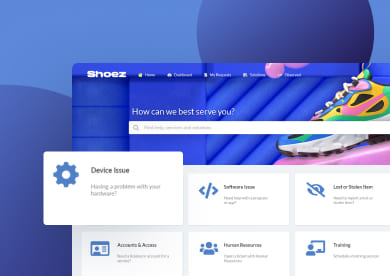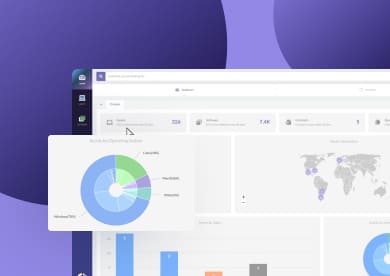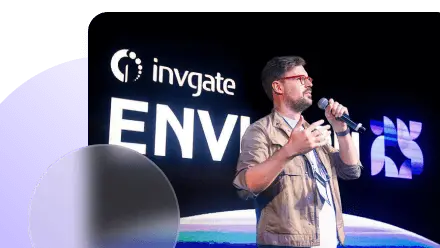IT Financial Management (ITFM) software connects the dots between IT operations and financial planning, so you can make decisions based on actual usage, value, and risk. Because managing IT costs without a clear view of what’s being used — and how — isn’t just inefficient, it leads to guesswork.
In this article, we’ll explain ITFM and why it matters. We’ll also walk through five ITFM tools, taking a close look at their features, pricing, and user feedback.
What is IT Financial Management (ITFM)?
IT Financial Management (ITFM) is the practice of planning, tracking, and analyzing IT spending to understand how funds are allocated and how those investments support the business.
It covers budgeting, forecasting, cost recovery, and value demonstration. The goal is to improve financial transparency and help IT leaders make informed decisions.
Why do you need ITFM software?
ITFM software provides the tools to organize financial data, allocate costs accurately, and report on IT spending in a way that aligns with business objectives. Without dedicated tools, the IT department often relies on spreadsheets or disconnected systems, which makes it harder to track where money is going and why. Software helps reduce manual work, prevent errors, and produce consistent reporting.
How IT Asset Management supports ITFM
Having an accurate view of IT assets is key to effective financial management. IT Asset Management (ITAM) systems feed ITFM tools with data on hardware, software, licenses, and cloud usage.
When asset data is integrated into financial processes, it’s easier to tie costs to services, understand lifecycle expenses, and make better decisions about renewals or replacements. An integrated view lets teams see both the financial and operational aspects of IT investments.
5 ITFM software options to consider
| Core Strength |
Ideal For | |
| InvGate Asset Management | Asset visibility and cost tracking | Organizations seeking ITFM via ITAM |
| Apptio | Service cost transparency and automation | Enterprises with mature ITFM practices |
| MagicOrange | Service cost transparency and automation | Businesses wanting visual cost insights |
| ComSci (Upland) | Bill of IT and chargeback capabilities | Companies focused on cost recovery |
| Bee360 | Strategic planning + ITFM + architecture | Large enterprises with complex planning needs |
1. InvGate Asset Management
InvGate Asset Management helps organizations track hardware, software, and cloud assets, offering the data needed to link IT inventory with financial planning. It’s a great option for organizations that want visibility into asset lifecycles and link asset usage with financial planning. The tool can be deployed on-premise or in the cloud and integrates with ITSM platforms.
It stands out for its focus on inventory, lifecycle tracking, and predictive planning. ITFM benefits come through a clear view of asset health, ownership, and costs, making it easier to forecast budgets and improve purchasing decisions.
InvGate Asset Management features
- Asset lifecycle tracking. Visibility into ownership, condition, and cost.
- License management with cost visibility.
- Hardware/software usage monitoring. Identifies unused licenses so teams can reassign or cancel subscriptions, improving ROI.
- Depreciation monitoring. Calculates asset depreciation over time, aiding audits and capital planning.
- Smart tags for IT budgeting. Use custom tags like “2026 Refresh” to flag upcoming investments and build more accurate forecasts.
- Asset-to-service mapping through CMDB.
InvGate Asset Management pricing details
Pricing depends on the number of assets and deployment preferences.
- Starter Plan: For small organizations, $0.21 per node per month ($1,250 billed annually).
- Pro Plan: Supports 501-10,000 nodes at $0.38 per node per month (billed annually).
- Enterprise Plan: Tailored for large enterprises with custom node requirements. Contact sales for pricing.
Unsure which plan suits you? Start with a 30-day free trial (no credit card required) to explore InvGate Asset Management.
InvGate Asset Management user reviews and ratings
InvGate Asset Management holds 4.7 out of 5 stars on Gartner Peer Insights. Users highlight the platform's ease of use and responsive support.
"Using InvGate Asset Management has been a solid experience overall. The platform offers a clear and intuitive interface, making it easy to track and manage IT asset across the organization.”
User review from Gartner, IT Manager
2. Apptio
Apptio is one of the most widely recognized ITFM platforms, especially in enterprises adopting the Technology Business Management (TBM) framework. Acquired by IBM, it's primarily a SaaS product known for its cost modeling, forecasting, and service-based spending analysis. It offers integrations with major cloud providers and enterprise systems like SAP and ServiceNow.
Apptio features
- Detailed cost modeling aligned with TBM.
- Forecasting tools for IT budgets.
- Cloud cost analysis across AWS, Azure, GCP.
- Allocation of IT costs to business units and services.
Apptio pros and cons
Pros:
- Built-in TBM framework support.
- Strong visualization and reporting tools.
- Enterprise-grade integrations.
Cons:
- Steep learning curve.
- Not well-suited for small teams or organizations.
Apptio pricing details
Apptio doesn’t publish public pricing. It operates on a subscription basis with separate modules like ApptioOne and Cloudability. It offers a 28-day free trial. Costs can be high for mid-market companies.
Apptio user reviews and ratings
Generally well-rated for its robust financial planning capabilities, but users often mention the complexity. It holds 4.1 stars in Gartner peer reviews.
“Apptio helped us as an organization to make better decisions based on qualitative data about how we spend our technology budget most effectively.”
User review from Gartner, IT Manager
3. MagicOrange
MagicOrange offers a cloud-based solution for IT cost transparency and chargeback. It’s often chosen by organizations looking to align IT costs with services and departments, with minimal infrastructure overhead. It integrates with a range of data sources, including general ledgers, CMDBs, and cloud billing systems.
MagicOrange features
- Cost allocation by business unit, service, or user.
- Role-based dashboards and financial reporting.
- Automated import from financial systems.
- Cloud cost visibility and trend tracking.
MagicOrange pros and cons
Pros:
- Focused approach to cost allocation.
- Cloud-native with quick setup.
- Suitable for multi-tenant organizations.
Cons:
- Less suited for complex budgeting workflows.
- Some customization limitations reported by users.
MagicOrange pricing details
MagicOrange doesn’t disclose its pricing. It is subscription-based and varies by data volume and modules. It is typically positioned as mid-market friendly but still quote-driven.
MagicOrange user reviews and ratings
Users appreciate the clarity it brings to IT spending. It has a 4.1 /5 rating in Gartner peer reviews.
“Great app for financial planning. Everything from easy-to-read data charts, to cost and profitability, as well as optimization, and even scenario simulations. MagicOrange can give you all sorts of data accurately and quickly in simple visualizations. (...) There is a bit of training that you'll need to do with this software, as it is not as user-friendly as some ready box solutions off the shelf. But it is very customizable.”
User review from Gartner, Systems infrastructure administrator
4. ComSci (by Upland Software)
ComSci is part of Upland Software's enterprise portfolio, focusing on IT cost management, chargeback, and showback. It’s deployed as a cloud solution and is often used in organizations with formal financial governance structures. The platform includes budgeting tools and helps organizations build service cost models. It’s suited for businesses looking to formalize cost recovery and improve accountability.
ComSci features
- Chargeback and showback automation.
- Integration with accounting and service systems.
- Multi-entity cost tracking.
- Financial data normalization and transformation.
ComSci pros and cons
Pros:
- Mature platform for IT cost recovery.
- Handles multi-entity and shared service models.
- Strong integration options.
Cons:
- User interface is less modern.
- Can require ongoing configuration and support.
ComSci pricing details
Pricing is available upon request. It typically involves implementation services and recurring subscription fees based on usage.
ComSci user reviews and ratings
It receives consistent feedback for reliability and detailed reporting. It has a 4.7 score in Gartner Peer Reviews.
“This software maintains all the digital data and based records accurately and more conveniently. Using this platform, you can gather financial information about any software, data and IT product. The software and the features are not very straightforward for new users. We can say that the software is a little bit expensive as compared to other similar platforms.”
User review from G2, Business Analyst
Bee360
Bee360, developed by Clausmark, offers an integrated platform that combines IT Financial Management, Enterprise Architecture, Project Portfolio Management (PPM), and Enterprise Service Management (ESM). It’s designed for large organizations that want to link strategic planning with operational execution.
The tool is typically deployed in the cloud but can also support hybrid setups. Its focus on transparency across financials, architecture, and operations makes it a good fit for CIOs and enterprise architects aiming to align IT with business priorities.
Bee360 features
- ITFM and project portfolio management integration.
- Cost modeling.
- Enterprise architecture mapping.
- Custom dashboards and reporting.
Bee360 pros and cons
Pros:
- Combines ITFM with strategic planning tools
- Deep integration between financial and operational data
- Strong enterprise architecture capabilities
Cons:
- Better suited for large enterprises with complex planning needs
- Steeper learning curve compared to tools focused only on ITFM
Bee360 pricing details
Bee360 uses a subscription pricing model, customized based on the modules selected and the size of the organization. Pricing details are available upon request.
Bee360 user reviews and ratings
Bee360 is generally well-rated by enterprise users, especially for its integration depth and ability to connect IT strategy with financial management. It holds 4.5 stars in Gartner Peer Reviews.
“Bee360 is a very useful IT Financial Management tool which provides seamless integration with major enterprise systems such as SAP and Microsoft, which ensures data flows smoothly across various platforms. It also provides a financial perspective, making it easier to make decisions regarding budgeting and forecasting IT costs.”
User review from Gartner, Project Engineer
How to choose ITFM software
Start by identifying what you need the software to support: budgeting, forecasting, chargeback, cost allocation, etc. Involve both the finance and IT teams in the selection process. Their priorities will differ, and software needs to meet both.
Consider:
- Integration: Can it connect with your asset and service data?
- Reporting: Are financial reports customizable and easy to share?
- Scalability: Will it support your current structure and future growth?
The right ITFM platform depends on how your organization approaches budgeting, asset oversight, and cross-department collaboration. If your priorities lean heavily on tracking the full lifecycle and cost of IT assets, then a tool with strong IT Asset Management (ITAM) features should be high on your list. On the other hand, a broader platform that includes strategic modeling and architecture views may be a better fit if you're dealing with portfolio management.
Think about what data you already have and what you’re missing. Look for tools that can integrate with your existing systems without overhauling everything at once. Flexibility matters — not just in deployment, but in how you adapt the software to reflect your real-world processes.
Conclusion
IT Financial Management gives organizations a structured way to make sense of where their technology budget goes — and what value it delivers in return. Instead of relying on static spreadsheets or fragmented reports, the right tool helps bring financial data closer to daily operations, making it easier to plan ahead, manage risk, and allocate funds with purpose.
If you already have some visibility into your assets, you’re in a strong position to take the next step. Even a partial IT inventory can support better financial planning when it’s connected to cost data.
Do you want to get started? InvGate Asset Management offers a practical, integrated path to stay on top of your IT costs and planning. Claim your 30-day free trial!















